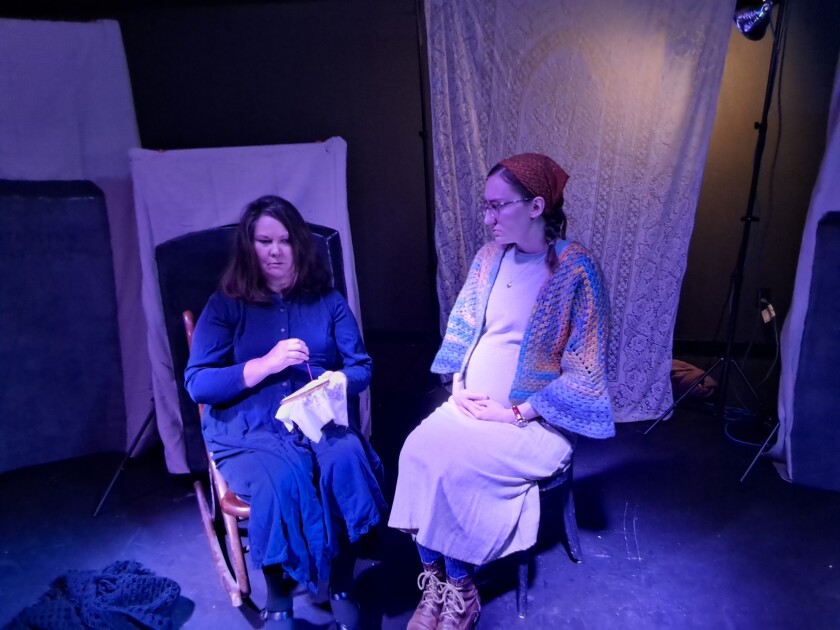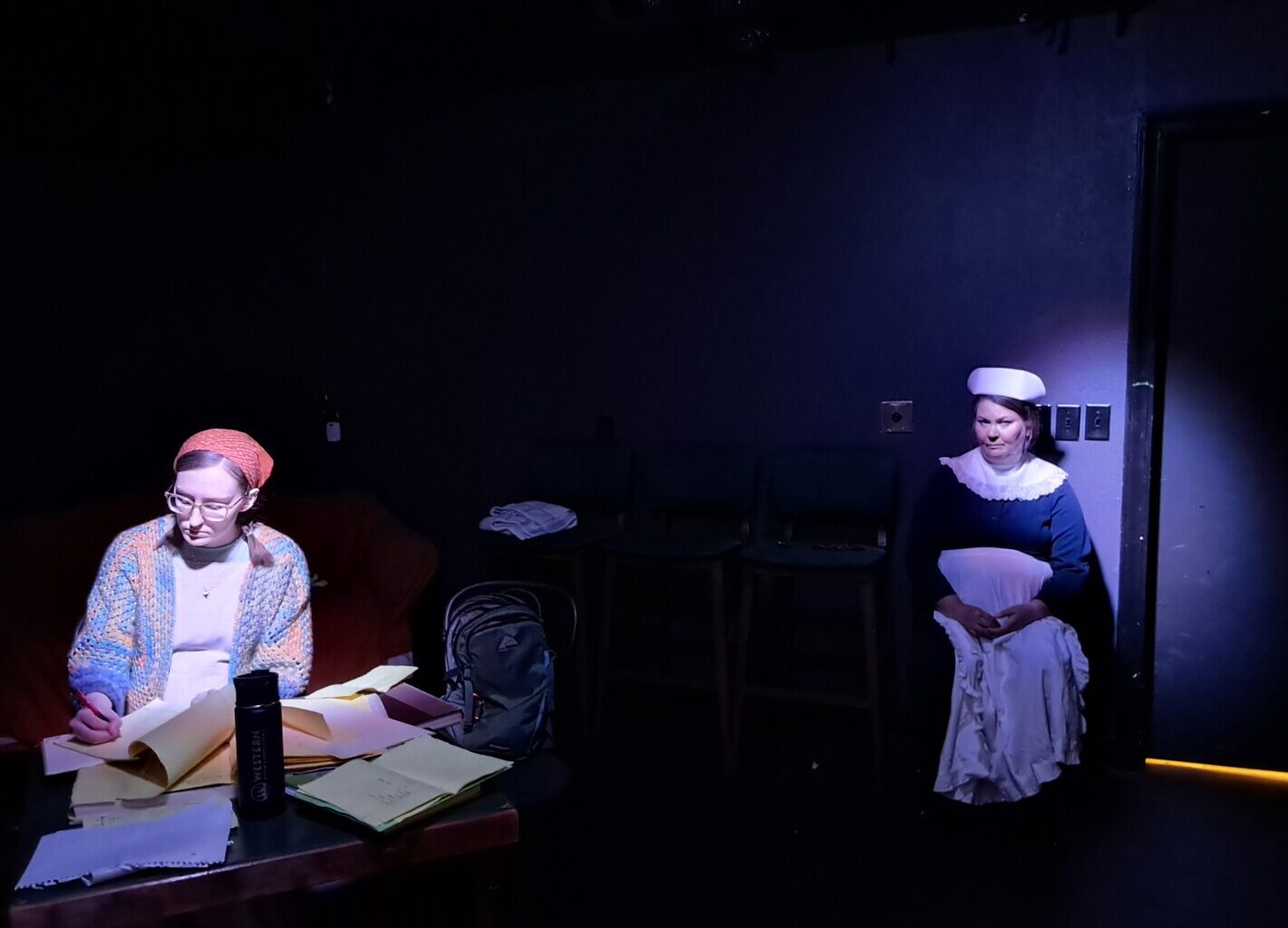GRAND FORKS – More than one in five adults in this country live with a mental illness, which includes many conditions that vary in degree of severity, according to the National Institute of Mental Health.
Although this illness affects about 23% of the population, or 59.3 million people, “the stigma surrounding mental illness persists,” said playwright Kathleen Coudle-King, “and far too many families experience shame associated with relatives who suffer from what is in fact an illness.”
Coudle-King, of Grand Forks, hopes her new one-act play, “There’s Something I Must Tell You,” dispels some of that stigma and encourages discussion about this “critical issue,” she said. “This is something that touches many, many families.”
Based on research into Jamestown State Hospital archives, online and other sources, the play will be presented at 2 and 4:30 p.m. Sunday, Aug. 3, at the Empire Arts Center in Grand Forks. Admission is a suggested donation of $15. The box office will open at 1 p.m. Seating in the Empire’s Black Box theater is limited. The play is not suitable for those under 15; it includes sensitive subject matter.
A “talk-back” session, featuring Coudle-King and cast members, will follow each one-hour performance.
Proceeds will support the theater troupe’s tour to present the play in Fringe Festivals in Omaha, St. Louis and Indianapolis later in August. Another performance was to be presented Friday, Aug. 1, in Brainerd, Minnesota.
Cast members are: Ashley Fredrickson and Jace Erickson, both of Fargo; Juliet Wolfe, New York City; Mary Aalgaard, Baxter, Minnesota; and Josh Widmer, Williston. Dean Whitlock, of Indianapolis, plans to fill in for Widmer for the Indianapolis performance.
Coudle-King’s work has been supported in part by grants from the North Dakota Council on the Arts. She has written and produced the plays “Retail Therapy: 700 Years of Mental Health Care” and “In Search of Persephone” – the latter about homelessness in Grand Forks.
Uncovering patients’ stories
For this play, Coudle-King has spent the last two years digging into Jamestown State Hospital records, discovering clues about patients who lived and died there in the late 1880s and early 1900s.
She sought to uncover the stories of those buried in the Old Cemetery at the facility, formerly known as the Hospital for the Insane, which opened in 1885, four years before North Dakota was granted statehood. It was the first hospital for the mentally ill in the Dakota Territory.
“These individuals lived, dreamed and, yes, struggled,” Coudle-King said. “It just hit my heart that these are folks who had been abandoned, basically. … You can see this when you look at the gravestones — they won’t have a birth date. Nobody knows when they were born; they just know the date they died.”
“My entire career has been about trying to give voice to people who don’t have a voice,” she said. “So this is kind of the ultimate (of that) – they died, and they died unknown.”
Coudle-King gathered background by searching online, where family members had posted notes that offered a bit more insight – using this to flesh out the play’s characters.
“While the dead can’t speak,” she said, “I’ve done my best to share parts of their stories because they need to be told.”
She focused on patients who have been gone for at least a century.
In writing the play she describes as “a ghost story based on historic records,” her goal was to encourage discussion around mental illness, bring it out of the shadows, and reduce the stigma associated with it.
“We often stigmatize mental illness, and it’s like it bleeds over into the family, so families have shame, where they would never have shame if somebody suffered from some disease or illness. They would talk openly and they would share and they would get support from people,” Coudle-King said. “But with mental illness, people don’t want to talk about it – it feels shameful.”
The play begins in 2025 when a young researcher, Claire, arrives at the hospital, ostensibly, to find information for her Ph.D. dissertation. She also has a personal stake in the research; she is pregnant and wants to know what happened to her great-great-grandmother. She’s worried that post-partum depression may run in her family, and this is her first baby.
This aspect of the play is drawn from a real-life story, said Coudle-King, who found a patient’s descendant online and contacted her.
“And so I visited with her and her cousin. And she told me the family story and gave me permission to tell it. So her great-great-grandmother is a major character in the play.”

A student ostensibly conducting research for her doctoral dissertation, Claire (Ashley Fredrickson, right) seeks information from her great-great-grandmother Bengta (Mary Aalgaard), at the state hospital in a scene from “There’s Something I Must Tell You.”
Contributed
The secrecy that families harbor is evident.
“Nobody knows what happened to (their) great-great-grandma,” Coudle-King said. “They just know that there were whispers that she went to Jamestown.”
As the play progresses, Claire gets locked in and, over the course of one night, encounters the ghosts of patients who suffered from various mental health challenges related to PTSD (Post Traumatic Stress Disorder), the trauma of emigration (at one time, there were patients from as many as 18 countries), the isolation of prairie life, as well as paranoid delusions, schizophrenia and being born a woman with no civil rights.
Coudle-King said she found evidence that a husband committed his wife to the hospital for depression, “divorced her and left her there.” The woman had no recourse or avenue for release.
Coudle-King discovered letters, written by family members, appealing to North Dakota’s U.S. senators to intervene on behalf of their loved one.
Hospital records of the late 1800s were scant, she said. “You would have a name, you would have eye color, hair color, what country they were from if they weren’t born in the U.S., their age.
“There very rarely were any diagnoses, very rarely was there much about what the treatments were,” she said. “The log books would say ‘Aug. 1, 1886 – no change. Aug. 20, 1887 – no change.’ It was very sketchy for the most part. So that’s where my imagination had to come in.”

